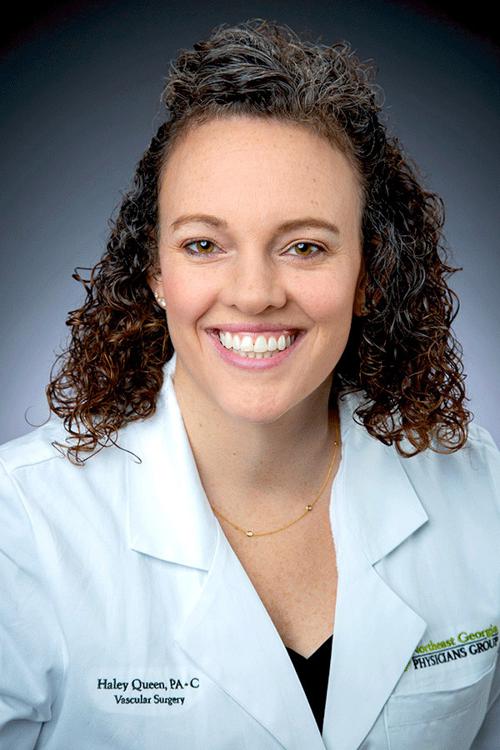Are your varicose veins bothering you? You’re not alone — millions of people deal with these twisted, bulging veins, especially in their legs. Let me walk you through what causes them, what to watch for, and how we treat varicose veins at the Northeast Georgia Physicians Group Vein Clinic.
What Are Varicose Veins?
Varicose veins are large, swollen veins that usually appear blue or purple. They often stick out from the skin and look twisted or rope-like. While they can happen anywhere, they’re most common in the legs, ankles and feet. In the United States, varicose veins affect more than 25% of adult women and more than 15% of adult men.
Although varicose veins are not dangerous, they can be more than a cosmetic concern. There can be physical signs and symptoms of varicose veins that indicate there is an underlying issue.
What Causes Varicose Veins?
Your veins carry blood back to your heart. Inside each vein are tiny valves that act like doors. They open to let blood flow up the leg, and close to keep it from going backward.
When these valves become weak or damaged, blood can pool in the vein instead of moving up toward your heart. This extra pressure makes the vein stretch, twist and bulge. That’s how varicose veins form.
There are a few main reasons people get them:
- Age: As you get older, your veins and valves naturally weaken.
- Genetics: If your parents had varicose veins, you can have a greater chance of having them, too.
- Standing or sitting for long periods: This puts more pressure on leg veins.
- Pregnancy: Extra blood flow and hormones can make veins swell as well as increased intra-abdominal pressure later in pregnancy.
- Obesity: Extra weight puts more pressure on the venous system.
Varicose veins are often a sign of a condition called chronic venous insufficiency, where blood struggles to return from your legs back to your heart. This ongoing pressure can lead to leg swelling, skin changes and even ulcers if left untreated.
Common Symptoms
Sometime, people with varicose veins have no symptoms, but common symptoms associated with varicose veins are:
- Aching or heavy legs
- Swelling in the lower legs or ankles
- Itching or dry skin over the veins
- Discomfort after sitting or standing for a long time
In more serious cases, varicose veins can lead to skin ulcers. In some cases, if left untreated, they can negatively impact your overall vein health.
How Do We Treat Them?
The good news is that there are several effective treatments for varicose veins:
- Lifestyle changes: Exercise, weight loss and elevating your legs can help.
- Compression stockings: These tight-fitting socks improve blood flow and reduce swelling.
- Minimally invasive procedures: We can seal off or remove the problem veins using techniques such as:
- Radiofrequency ablation: This procedure uses energy to heat up and damage the wall of the vein, closing off the vein that is not working properly.
- VenaSeal: An adhesive medication fills the ineffective vein, closing it off.
- Sclerotherapy: Your provider injects a solution into the vein. The vein will collapse, forcing the blood to reroute to healthier veins and improving the appearance of the leg.
- Phlebectomy: Diseased veins are removed through several small cuts in the skin.
We can usually do these procedures in the Vein Clinic office. They have quick recovery times and don’t require a hospital stay. My colleague Ashley King or I would love to help you determine the best approach based on your symptoms and vein condition.
Connect with the Vein Clinic
There are many reasons to seek a medical opinion concerning varicose veins. They can affect your quality of life both physically and emotionally. If this is you, come talk to one of our vein specialists to learn about your treatment options. To schedule your appointment, call the NGPG Vascular Center at 770-219-4000, or click the button below to find a provider.



